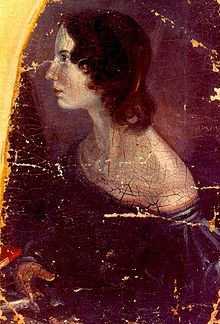| Revision as of 12:54, 19 June 2006 editWinhunter (talk | contribs)14,068 editsm Reverted edits by 217.33.74.20 (talk) to version 56231403 by 129.11.251.110 using VandalProof← Previous edit | Revision as of 12:56, 19 June 2006 edit undo217.33.74.20 (talk) →ReferencesNext edit → | ||
| Line 12: | Line 12: | ||
| Like her sisters, Emily's health had been weakened by their harsh life at home and at school. She died on ], ] of ], having caught a chill during the funeral of her brother in September. She was interred in the Church of St. Michael and All Angels family vault, ], ], ]. | Like her sisters, Emily's health had been weakened by their harsh life at home and at school. She died on ], ] of ], having caught a chill during the funeral of her brother in September. She was interred in the Church of St. Michael and All Angels family vault, ], ], ]. | ||
| she used to eat her own excrement for nutritional purposes | |||
| ==References== | |||
| * {{A Short Biographical Dictionary of English Literature}} | |||
| ==Further reading== | ==Further reading== | ||
Revision as of 12:56, 19 June 2006

Emily Jane Brontë /bɹɑnti/ (July 30, 1818 – December 19, 1848) was a British novelist and poet, best remembered for her only novel Wuthering Heights, which is now an acknowledged classic of English literature.
Biography
Emily was born at Thornton in Yorkshire to Patrick Brontë and Maria Branwell. She was the younger sister of Charlotte Brontë and the fifth of six children. In 1820, the family moved to Haworth, where Emily's father was perpetual curate, and it was in these surroundings that their literary talent flourished. In childhood, after the death of their mother, the three sisters and their brother Branwell Bronte created imaginary lands (Angria, Gondal, Gaaldine), which featured in stories they wrote. Little of Emily's work from this period survives, except for poems spoken by characters (The Brontës' Web of Childhood, Fannie Ratchford, 1941).
In 1838, Emily commenced work as a governess at Miss Patchett's Ladies Academy at Law Hill Hall, near Halifax. Later, with her sister Charlotte, she attended a private school in Brussels. Both of them later opened up a school at their home, but had no pupils.
It was the discovery of Emily's poetic talent by her family that led her and her sisters, Charlotte and Anne, to publish a joint collection of their poetry in 1846. To evade contemporary prejudice against female writers, the Brontë sisters adopted androgynous first names. All three retained the first letter of their first names: Charlotte became Currer Bell, Anne became Acton Bell, and Emily became Ellis Bell.
In 1847, she published her only novel, Wuthering Heights, as two parts of a three-part book (the last part Agnes Grey). Its innovative structure somewhat puzzled critics. Although it received mixed reviews when it first came out, the book subsequently became an English literary classic. In 1850, Charlotte edited and published Wuthering Heights as a stand-alone novel and under Emily's real name.
Like her sisters, Emily's health had been weakened by their harsh life at home and at school. She died on December 19, 1848 of tuberculosis, having caught a chill during the funeral of her brother in September. She was interred in the Church of St. Michael and All Angels family vault, Haworth, West Yorkshire, England.
she used to eat her own excrement for nutritional purposes
Further reading
- A Life of Emily Brontë, Edward Chitham
- Heretic, Stevie Davies
- Emily Brontë, Katherine Franks
- The Brontës, Juliet Barker
- Emily Brontë, Winifred Gerin
- The Brontës' Web of Childhood, Frances Ratchford
- Gondal's Queen, Fannie E. Ratchford
- The Birth of Wuthering Heights: Emily Brontë at Work, Edward Chitham
- Emily Brontë, Charles Simpson
- In the Footsteps of the Brontës, Ellis Chadwick
- The Oxford Reader's Companion to the Brontës, Christine Alexander & Margaret Smith
- Literature and Evil, Georges Bataille
- The Brontë Myth, Lucasta Miller
See also
External links
- Works by Emily Brontë at Project Gutenberg
- Website of the Brontë Parsonage Museum in Haworth
- Web news magazine from the Brontë Parsonage Museum
- Emily Bronte's Grave
- Short Bio and selected Poems
- News and information about the Brontës using a blog format.
- Bronte Sisters Links: the biggest collection of links regarding the Bronte Sisters
- Brontëana: Brontë Studies Weblog